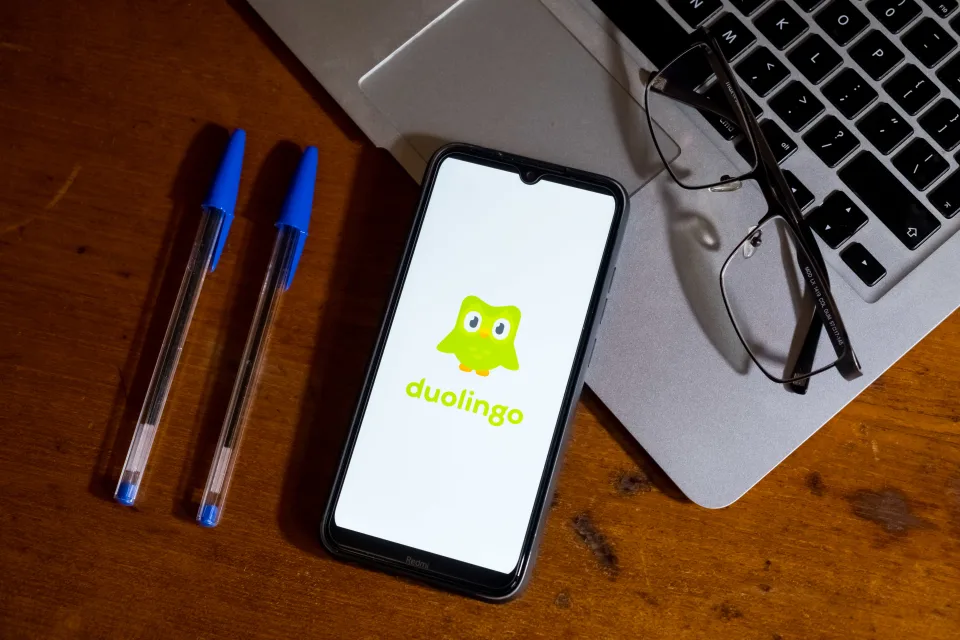
Duolingo, one of the world’s leading language-learning platforms, recently made headlines by officially declaring itself an “AI-first” company. This transformative shift is primarily marked by the gradual replacement of human contract workers with artificial intelligence. The move aligns with a broader technological evolution taking place globally, where organizations increasingly rely on AI to enhance productivity, efficiency, and scalability.
The Historical Context of Duolingo
Founded in 2011 by Luis von Ahn and Severin Hacker, Duolingo quickly rose to prominence through its innovative, gamified approach to language education. Initially, the platform relied heavily on human linguists and translators to build and verify language content. Over the years, the Pittsburgh-based startup expanded rapidly, gaining millions of users worldwide and achieving a landmark status in online education.
Von Ahn, known for his previous ventures including CAPTCHA and reCAPTCHA technologies, has always emphasized the power of crowdsourcing and technology integration in his projects. From its inception, Duolingo focused on providing accessible and free language education, guided by the philosophy that language learning should be universally available and engaging. This foundational belief set the stage for Duolingo’s current AI-driven transformation.
Transition to AI: Strategic and Technological Rationale
In early 2024, Duolingo reduced its workforce by approximately 10 percent, primarily affecting contract positions. This move was a precursor to a broader strategic pivot toward AI integration. CEO Luis von Ahn communicated via an internal memo—later shared publicly—that manual content creation significantly restricted scalability. “Creating extensive content manually simply isn’t scalable,” von Ahn remarked, “and our decision to implement AI-driven processes allows us to rapidly expand our offerings to millions more learners globally.”
The rationale behind Duolingo’s transition to artificial intelligence extends beyond cost reduction. AI enables the company to generate vast amounts of language-learning content quickly and efficiently. Previously, linguists and educators manually crafted and reviewed each lesson, a meticulous process taking substantial time and resources. AI streamlines these processes through natural language processing (NLP) and machine learning algorithms that produce educational content faster and continuously improve from user feedback.
Technological Advancements Behind Duolingo’s AI Integration
Duolingo’s current AI implementation is built upon cutting-edge technologies in machine learning and NLP. Algorithms developed in-house evaluate linguistic accuracy, contextual usage, grammar, and pronunciation patterns. These systems continuously improve their accuracy and relevance by learning from millions of user interactions daily. Consequently, content generation and error correction become quicker and more responsive to learners’ evolving needs.
Furthermore, Duolingo is actively investing in generative AI technologies like GPT (Generative Pretrained Transformer) models, enabling the creation of personalized and dynamic learning paths for users. Such advancements allow Duolingo to customize learning experiences uniquely for each user, significantly enhancing engagement and efficacy in language education.
Implications for Employees and Contractors
Although AI adoption presents substantial benefits, the transition poses challenges for Duolingo’s workforce. Contract workers previously responsible for content creation, verification, and quality assurance are now seeing their roles diminished. Von Ahn openly acknowledges these changes, asserting the importance of prioritizing resources efficiently. He emphasizes that employees will be repurposed toward tasks requiring nuanced human judgment, creativity, and strategic oversight.
Duolingo’s leadership promises continued investment in human capital, seeking candidates with proven AI competencies and technological fluency. The hiring process and performance evaluations now include criteria assessing familiarity and aptitude with AI technologies, underlining the company’s commitment to a fully integrated technological future.
AI and the Future of Language Education
Despite its efficiency, von Ahn admits that AI technology is not flawless. Mistakes in automatically generated content occasionally appear, potentially affecting user experience and learning accuracy. Yet, Duolingo’s management views these imperfections as acceptable trade-offs in pursuit of rapid scalability and global accessibility. They argue that ongoing improvements driven by extensive user interactions will gradually resolve these early-stage issues.
This shift reflects broader trends in education technology, where personalized learning and scalable solutions powered by AI are becoming standard. As Duolingo continues on this path, the implications for global language education are significant. Increased access to diverse languages, customized educational content, and the potential to reach remote or underserved populations could profoundly influence global literacy and language proficiency rates.
Ethical and Social Considerations
While Duolingo’s strategy makes sound business sense, it also raises important ethical questions. Replacing human labor with AI inevitably disrupts traditional employment models, prompting necessary dialogue about job displacement and retraining initiatives. Duolingo, aware of this concern, emphasizes its efforts to mitigate negative employment impacts through employee upskilling, comprehensive training programs, and by fostering an internal culture that values technological proficiency alongside human creativity.
Conclusion: A Balanced Vision for the Future
Duolingo’s pivot toward an AI-first operational strategy represents a significant technological evolution with profound implications for its workforce and global users. Balancing technological efficiency with ethical employment practices remains a central challenge for the company. However, the potential benefits—increased scalability, personalized learning experiences, and broader global accessibility—present compelling arguments for continued AI integration.
As Duolingo advances on this ambitious path, it sets a benchmark for educational technology innovation, sparking critical conversations about AI’s role in education and employment. The journey of Duolingo illustrates how technology, thoughtfully applied, has the power not only to transform industries but to substantially enhance human potential worldwide.

